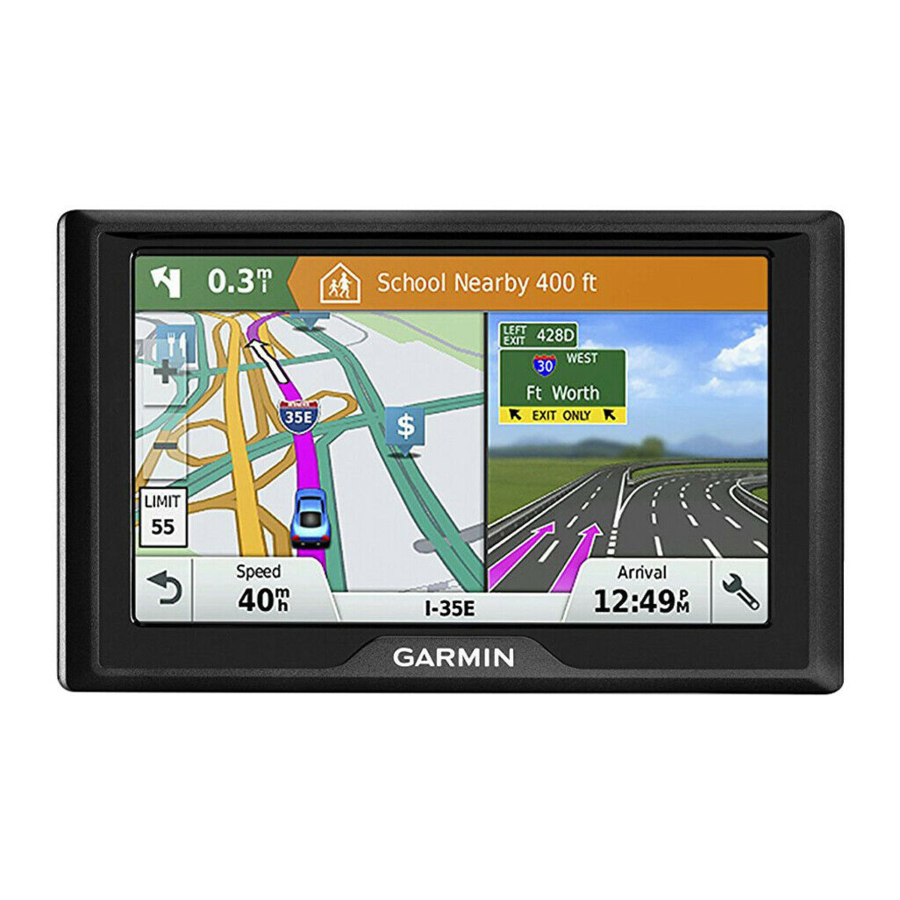Garmin Fenix 5s Manual do Proprietário - Página 18
Procurar online ou descarregar pdf Manual do Proprietário para Ver Garmin Fenix 5s. Garmin Fenix 5s 48 páginas.
Também para Garmin Fenix 5s: Manual do Proprietário (27 páginas)

while running. It displays a percentage. For example, 53.2
with an arrow pointing left or right.
Stride length: Stride length is the length of your stride from one
footfall to the next. It is measured in meters.
Vertical ratio: Vertical ratio is the ratio of vertical oscillation to
stride length. It displays a percentage. A lower number
typically indicates better running form.
Training with Running Dynamics
Before you can view running dynamics, you must put on a
running dynamics accessory, such as the HRM-Run accessory,
and pair it with your device
page
31). If your D2 Charlie was packaged with the accessory,
the devices are already paired, and the D2 Charlie is set to
display running dynamics data screens.
1
Select an option:
• If your running dynamics accessory and D2 Charlie device
are already paired, skip to step 7.
Color Gauges and Running Dynamics Data
The running dynamics screens display a color gauge for the primary metric. You can display cadence, vertical oscillation, ground
contact time, ground contact time balance, or vertical ratio as the primary metric. The color gauge shows you how your running
dynamics data compare to those of other runners. The color zones are based on percentiles.
Garmin has researched many runners of all different levels. The data values in the red or orange zones are typical for less
experienced or slower runners. The data values in the green, blue, or purple zones are typical for more experienced or faster
runners. More experienced runners tend to exhibit shorter ground contact times, lower vertical oscillation, lower vertical ratio, and
higher cadence than less experienced runners. However, taller runners typically have slightly slower cadences, longer strides, and
slightly higher vertical oscillation. Vertical ratio is your vertical oscillation divided by stride length. It is not correlated with height.
Go to
www.garmin.com/runningdynamics
running dynamics data, you can search reputable running publications and websites.
Color Zone Percentile in Zone Cadence Range Ground Contact Time Range
Purple
>95
Blue
70–95
Green
30–69
Orange 5–29
Red
<5
Ground Contact Time Balance Data
Ground contact time balance measures your running symmetry and appears as a percentage of your total ground contact time. For
example, 51.3% with an arrow pointing left indicates the runner is spending more time on the ground when on the left foot. If your
data screen displays both numbers, for example 48–52, 48% is the left foot and 52% is the right foot.
Color Zone
Symmetry
Percent of Other Runners
Ground Contact Time Balance >52.2% L 50.8–52.2% L 50.7% L–50.7% R 50.8–52.2% R >52.2% R
While developing and testing running dynamics, the Garmin team found correlations between injuries and greater imbalances with
certain runners. For many runners, ground contact time balance tends to deviate further from 50–50 when running up or down hills.
Most running coaches agree that a symmetrical running form is good. Elite runners tend to have quick and balanced strides.
You can watch the color gauge or data field during your run or view the summary on your Garmin Connect account after your run.
As with the other running dynamics data, ground contact time balance is a quantitative measurement to help you learn about your
running form.
Vertical Oscillation and Vertical Ratio Data
The data ranges for vertical oscillation and vertical ratio are slightly different depending on the sensor and whether it is positioned at
the chest (HRM-Tri
or HRM-Run accessories) or at the waist (Running Dynamics Pod accessory).
™
Color Zone Percentile in Zone Vertical Oscillation Range at
Purple
>95
Blue
70–95
Green
30–69
Orange 5–29
Red
<5
12
(Pairing Your Wireless Sensors,
for more information on running dynamics. For additional theories and interpretations of
>183 spm
<218 ms
174–183 spm
218–248 ms
164–173 spm
249–277 ms
153–163 spm
278–308 ms
<153 spm
>308 ms
Red
Orange
Poor
Fair
5%
25%
Chest
<6.4 cm
6.4–8.1 cm
8.2–9.7 cm
9.8–11.5 cm
>11.5 cm
• If your running dynamics accessory and D2 Charlie device
are not already paired, complete all the steps in this
procedure.
2
Hold UP.
3
Select Settings > Activities & Apps.
4
Select an activity.
5
Select the activity settings.
6
Select Data Screens > Add New.
7
Select a running dynamics data screen.
NOTE: The running dynamics screens are not available for
all activities.
8
Go for a run
9
Select UP or DOWN to open a running dynamics screen to
view your metrics.
Green
Orange
Good
Fair
40%
25%
Vertical Oscillation Range at
Waist
<6.8 cm
6.8–8.9 cm
9.0–10.9 cm
11.0–13.0 cm
>13.0 cm
(Starting an Activity, page
Red
Poor
5%
Vertical Ratio at Chest Vertical Ratio at Waist
<6.1%
6.1–7.4%
7.5–8.6%
8.7–10.1%
>10.1%
4).
<6.5%
6.5–8.3%
8.4–10.0%
10.1–11.9%
>11.9%
Heart Rate Features
